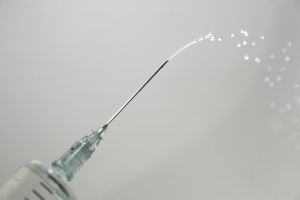Many of the diseases that threaten the lives and comfort of cats can be prevented.
The first such disease is Feline Leukemia. Feline Leukemia is a potentially lethal virus transmitted between cats through saliva. A cat with Feline Leukemia will exhibit symptoms such as fever, diarrhea, loss of appetite, weight loss, enlarged lymph nodes and seizures.
Once acquired, there is no way to cure Feline Leukemia but the disease can be prevented. A vaccine is available but it isn’t 100 percent effective so it’s also important to keep cats inside where they’ll avoid the fights and bites that are typical causes of infection.
The second preventable disease in cats is rabies. The rabies virus is lethal in cats and there is no treatment. A cat with rabies will exhibit symptoms such as excitability, lack of appetite, seizures and paralysis.
Because there’s no treatment, it’s important to have cats vaccinated against the virus. This vaccination is mandatory in many localities.
Another preventable disease in cats is Feline immunodeficiency virus (FIV). Commonly known as Feline AIDs, FIV is transmitted through saliva as well as from a mother to her offspring.
A cat with FIV will contract multiple infections and diseases and may also suffer from neurological disorders. Like human AIDs, there is no cure for FIV although a cat can live as long as 10 years with disease.
Because there is no cure, it’s important to prevent the disease from ever being contracted by vaccinating the animal at an early age.
The fourth preventable disease in cats is Feline Distemper. Feline Distemper is a virus and an infected cat will exhibit symptoms such as seizures, vomiting, fever and diarrhea.
There is no cure for Feline Distemper but the symptoms can be treated and mitigated. There are both live and dead vaccines available to prevent contractions of the disease.
The final disease is Heartworm Disease. A cat with heartworms will exhibit loss of appetite, weight loss, coughing, difficulty breathing and lethargy.
Heartworm Disease can’t be prevented by restricting certain behavior because heartworms are spread through mosquitoes. However, monthly preventives can be used to keep cats heartworm free.
Prevention is extremely important in feline heartworm disease because there are no approved drugs to treat feline heartworms. Given time, many cats will experience a spontaneous recovery.
None of these five diseases can be treated once a cat has contracted them. For this reason, it’s important to take the available preventative measures to ensure your cat leads a long and healthy life.
Sources:
American Association of Feline Health Practitioners, “Feline Leukemia Virus,” Cornell Feline Health Center.
American Association of Feline Health Practitioners, “Feline Immunodeficiency Virus,” Cornell Feline Health Center.
D. Swain, “Rabies in Cats — The Truth About Feline Rabies,” ezinearticles.com
Holly Nash, “Panleukopenia (Feline Distemper) in Cats & Kittens,” Veterinary Services Department, Drs. Foster & Smith, Inc.
American Heartworm Society, “2007 Guidelines for the DIagnosis, Treatment and Prevention of Heartworm (Dirofilaria immitis) Infection in Cats.”





